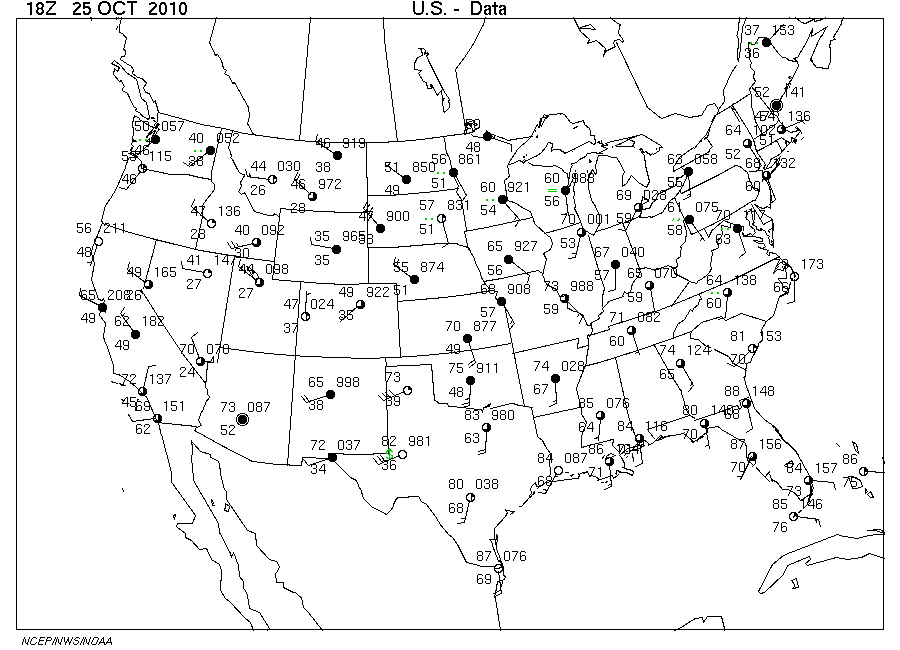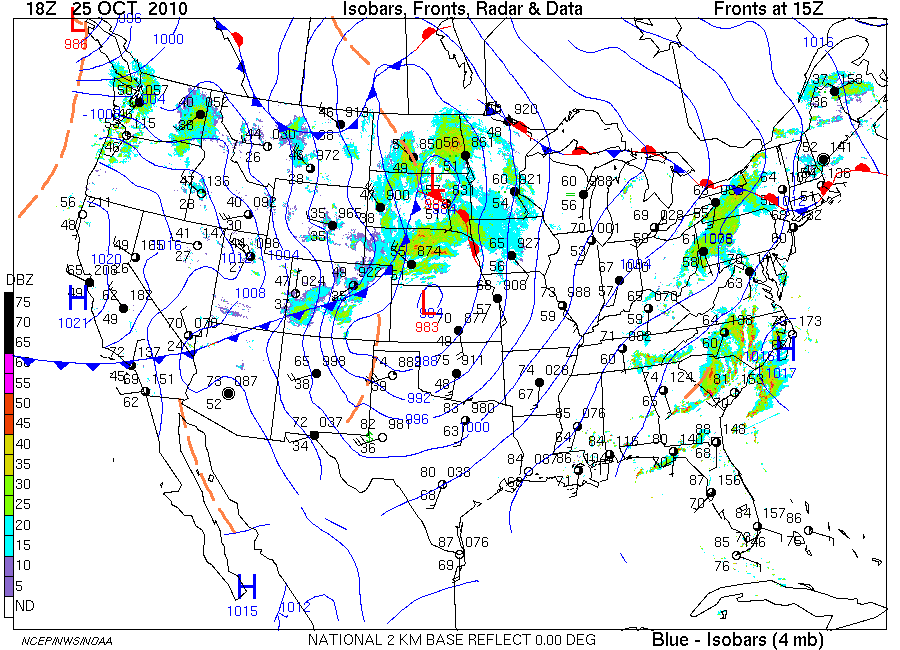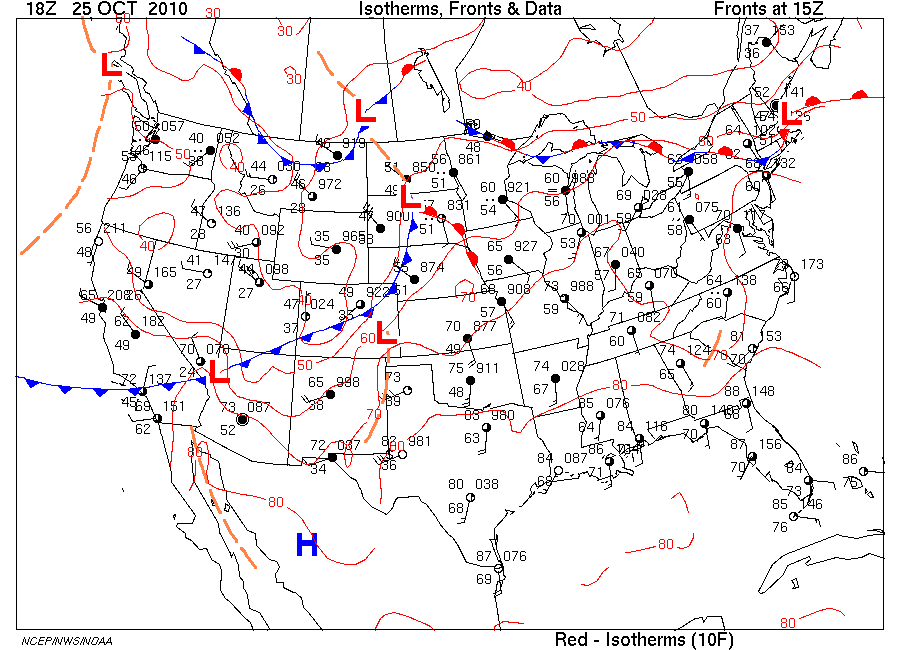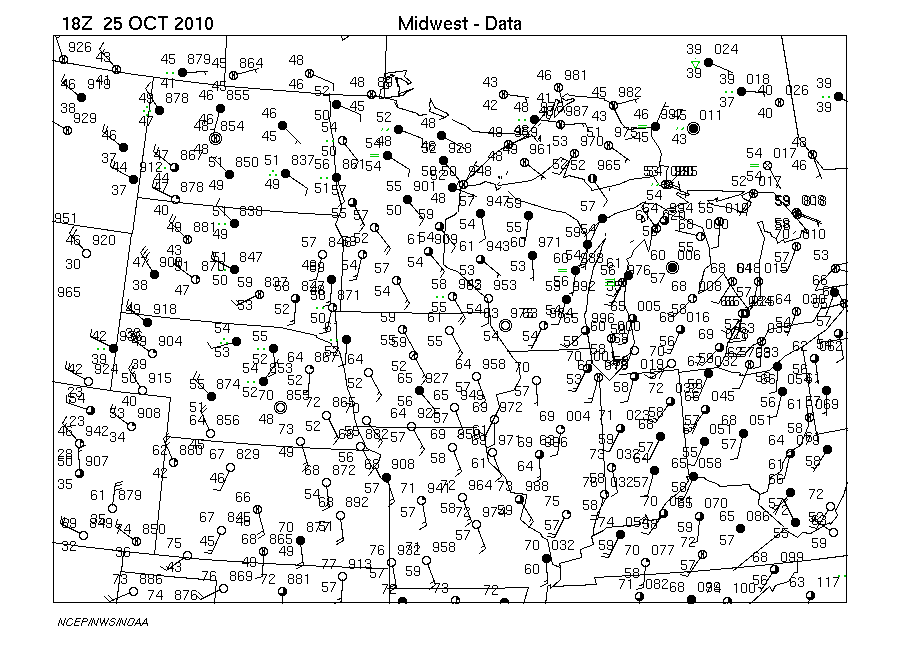
Click image for full resolution

Click image for full resolution
 Click image for full resolution |
 Click image for full resolution |
| Click here for latest unanalyzed surface map from website | Click here for latest analyzed surface map from website |
Weather information is coded in a surface station model on surface weather maps. For a description of the surface station model, click here. The circle at the center of the model is centered on the station location. The approximate time that the weather information was collected is shown in UTC with the date in the upper left margin. For station identities, see Available Surface Stations.
The surface weather map on the right is computer-analyzed for
pressure by the addition of isobars. Also, the location of centers of
relatively highest and lowest pressures are shown by H and L,
respectively. In addition, the positions of frontal boundaries are
displayed. For an explanation of the symbols used for fronts, click
here. The time of the frontal locations is given in the upper
right margin. Finally, the position of radar echoes from a national
network of NWS Doppler radars is overlain where echo intensity is shown
by the radar reflectivity scale along the lower left margin. For more
interpretation of the radar intensity scale, click
here.
 Click image for full resolution |
 Click image for full resolution |
| Click here for latest temperature advection map from website | Click here for latest Midwest data (for example) map from website |
The map on the left displays station data, fronts and pressure systems, and isotherms. For more information on isotherms, see the Temperatures choice from Surface links. The wind patterns in relation to the isotherms display situation of warm air or cold air advection. Warm or cold air advection can dramatically affect temperatures at a station over the future hours.
The map on the right is an example of a detailed regional map showing
many
more station models than can be presented on the regular
surface map. Regional maps display weather conditions every hour for
the Northwest, Midwest, Northeast, Mid-Atlantic, Southeast, Southern
Plains, and Southwest areas of the coterminous U.S.
| Back to Contents |